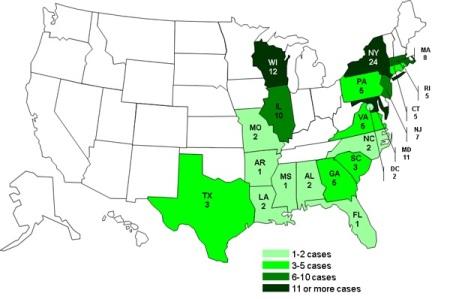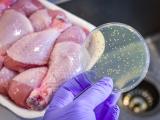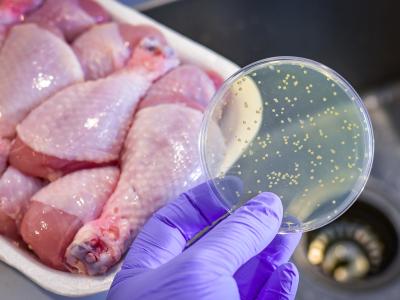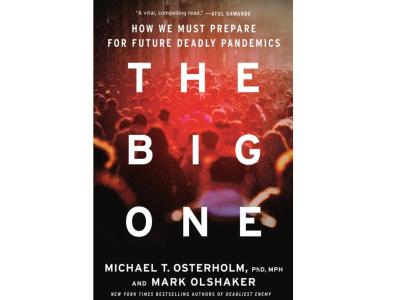Apr 16, 2012 (CIDRAP News) – A probe of illness clusters and trace-back investigations have linked a multistate Salmonella Bareilly outbreak to a California company's raw ground tuna that was used by restaurants and grocery stores to make sushi, according to US officials.
The US Centers for Disease Control and Prevention (CDC) said in an Apr 13 update that outlets involved in four illness clusters had received their raw tuna from the same source, which had imported the frozen raw Nakaochi Scrape tuna from a single processing facility in India.
Moon Marine USA Corp, based in Cupertino, Calif., voluntarily recalled 58,828 pounds of frozen raw yellowfin tuna product on Apr 13, according to a Food and Drug Administration (FDA) recall notice. Nakaochi Scrape is back meat that, when scraped off the bones, resembles ground tuna, the FDA said.
Boxes sold to distributors were labeled with the company's name and Nakaochi Scrape AA or AAA, but the FDA said the boxes may have been broken down into smaller lots for further sale, making it difficult for grocery stores and restaurants to identify the implicated product. The boxes contain several vacuum-wrapped packages with no further labeling.
When the CDC announced the outbreak in early April, it said investigators were still pinning down the food source, though it appeared that sushi, especially spicy tuna roll sushi, was suspected.
The number of patients sickened in the outbreak remains at 116 since the CDC's last outbreak update, on Apr 11, with 20 states and the District of Columbia reporting cases. So far 12 people have been hospitalized, and no deaths have been reported.
The initial epidemiologic investigation suggested a link to a sushi item containing tuna, and, to explore a stronger link, public health officials focused on seven clusters at restaurants or grocery stores at which two or more unrelated people ate the week before they got sick.
The CDC said investigators pulled together a comparison group from those who ate at one of the grocery stores or restaurants and a restaurant where a single person recalled eating sushi only once in the week before illness. The agency said authorities collected records on sushi orders placed at the same time of day and as close as possible to when the sick person ate at the restaurant.
So far, results from four clusters—located in Connecticut, Rhode Island, Texas, and Wisconsin—show that the proportion of sushi orders containing tuna averaged 61%, and orders containing "spicy tuna" averaged 37%, which the CDC said suggests a link between getting sick and eating sushi made with tuna, specifically "spicy tuna."
Public health officials have also been visiting restaurants and grocery stores where customers got sick to explore what ingredients were used in the "spicy tuna" recipes. The CDC said that, based on information from five of the seven restaurant or grocery store clusters, raw tuna was a common ingredient in all five.
See also:
Apr 13 CDC outbreak update
Apr 13 FDA recall notice



















